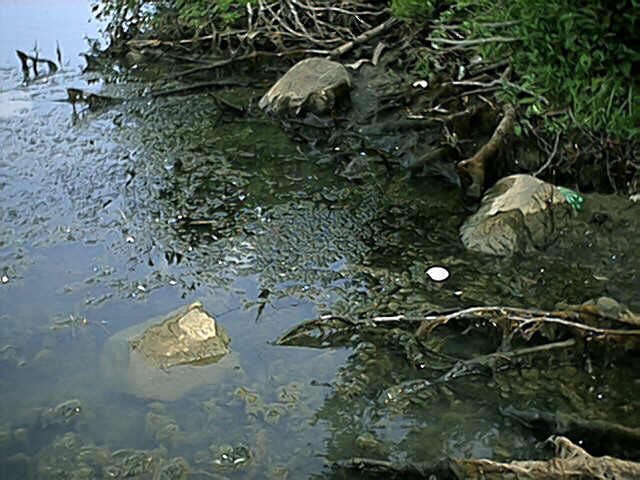|
Why is Hydrilla a problem?
- Makes swimming, boating, fishing,
and water skiing difficult and dangerous - or impossible
(people have drowned because of Hydrilla!).
- Hinders commercial navigation
- Clogs water intake systems
- Shades out desirable aquatic plants
- Provides breeding habitat for mosquitoes
and other pest.
How to Control Hydrilla
Once Hydrilla becomes established, eradication
is often not possible. The treatment required
to control infestations within levels that would permit
continued use of lakes and streams is difficult and
expensive.
Herbicides and mechanical harvesters
provide some control of Hydrilla, but both are expensive
and regrowth can be rapid requiring repeated treatments.
NOTE: The Catawba Riverkeeper
Foundation, Catawba Riverkeeper, and The Lake Norman
Covekeepers DO NOT support herbicides as a control
method!
Herbicides used on Hydrilla:
-
Glyphosate, (a
suspected human carcinogen and mutagen)
-
Diquat, (known
to cause liver damage and cataracts)
-
Copper, (known
human mutagen with varying toxicity to fish)
has also been
found to damage aluminum boats and pontoons.
-
Fluridone. (moderate
toxicity to fish and other aquatic organisms)
The most cost-effective, long tern control of Hydrilla
is the use of sterile grass carp, Ctenopharyngodon idella. When
this herbivorous fish is stocked at rates of up to 20 fish per acre of
Hydrilla, control can generally be obtained in one or two years.
Once control is obtained, maintenance stockings of grass carp are required
to maintain control in subsequent years.
Click here for more info about Grass Carp used to control
the Hydrilla on Lake Norman.
Whole-lake management of hydrilla with
grass carp is certainly possible, however, the "getting
there" will be exceedingly challenging. An
estimate of grass carp management costs of hydrilla
on Lake Norman could easily be based on 160,000 fish
(8000 potential hydrilla acres times 20 fish per acre)
at $4.00 a fish. Supplemental stocking (~25% of the
original stocking) would be required every two years
or so to maintain a viable weed eating population of
grass carp. Management of hydrilla is a long-term
commitment.
Following a time consuming hydrilla distribution assessment
by Lake Norman's Duke Power's Mosquito Control Teams, hydrilla is now
scattered over approximately 18 square miles of lake surface area.
This is an increase of 14 square miles from last year. The key word is
scattered. It is not covering 18 square miles of lake surface. The plant
is growing in individual scattered sprigs, small clumps to large
clumps and complete cove coverage depending on the location.
The photo below shows
the mosquito habitat and muck that can be created by
Hydrilla (photo taken at Mountain Island Lake July 2002).

Hydrilla look-alikes
American waterweed = Canadian elodea
= Elodea canadensis
Native to the US
Brazilian elodea = Egeria densa
Non-Native to the US
(Anacharis is a term used for all the
above)
Comparisons
of the three (this page may
load very slow)
Links to Hydrilla information on other
sites
Hydrilla
infestation at Lake James
Duke
Power answers Lake James Hydrilla questions
Mountain Island Marine Commission Hydrilla information
University
of Florida - Hydrilla identification and photos
|